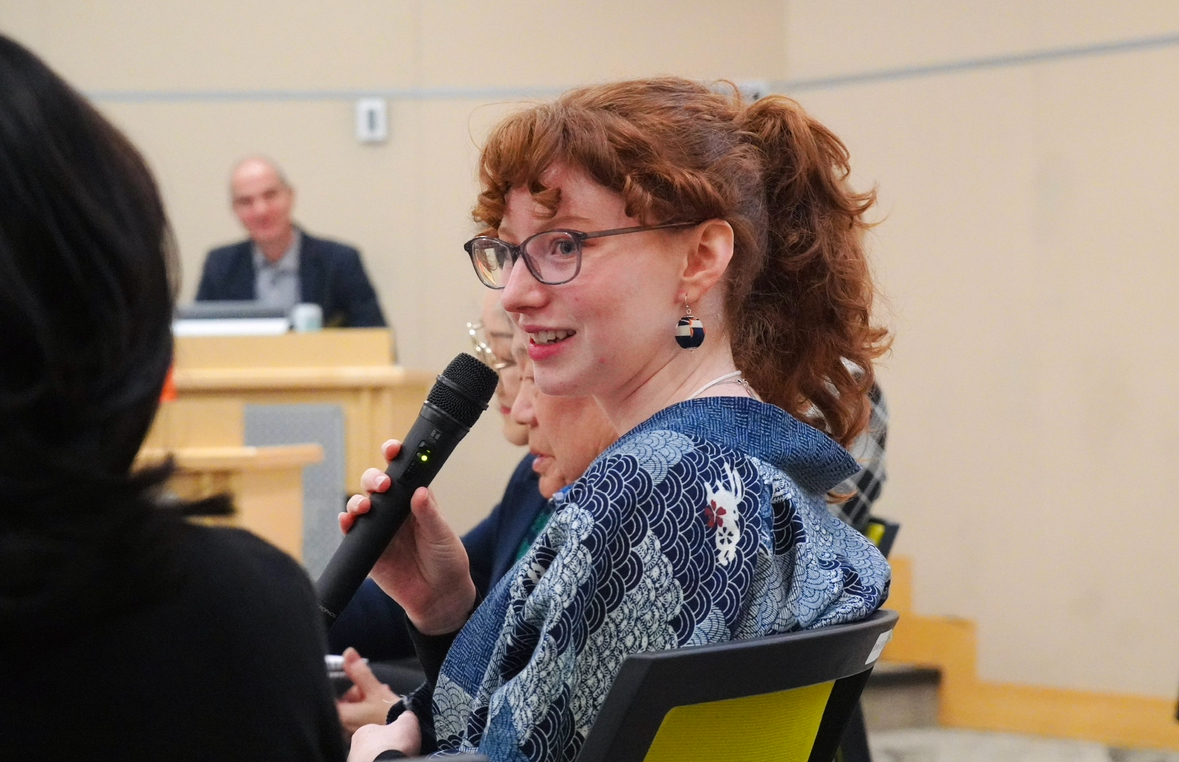‘In Our Grandparents’ Kitchens’ explores how cooking connects us to our heritage

Photo courtesy of National Association of Japanese Canadians 2024 Northern Lights Conference.
In Our Grandparents’ Kitchens is a short documentary film made by fifth-year UVic anthropology student Djuna Nagasaki. Nagasaki recently screened the film for the Victoria Historical Society, where she also spoke about the history of Japanese-Canadian internment during the Second World War and the impacts it had on subsequent generations.
Filmed in conjunction with her honours research on Yonsei and Gosei (fourth- and fifth-generation) Japanese-Canadian identities, In Our Grandparents’ Kitchens shows the potency of food as a means of cultural connection. As part of her research, Nagasaki hosted “food gatherings” with other young Japanese Canadians, where participants would collaborate to prepare a number of Japanese-Canadian dishes.
“I wanted to try and replicate the sense of belonging and togetherness I found within my grandfather’s kitchen,” narrates Nagasaki in the film, “so I could create a safe space where other young Japanese Canadians could come together to make sense of their own identities and find community.”
In the film, Nagasaki highlights that the recipes were distinctly Japanese-Canadian — reflecting the ways families adapted their cooking to preserve Japanese cuisine when they lacked access to traditional ingredients.
Nagasaki said that many participants at the food gatherings came from different backgrounds — some had Korean, Chinese, and Persian heritage in addition to Japanese — but this didn’t prevent the sense of togetherness she wanted to create.
“Sometimes we related to stuff, sometimes we didn’t. But there was this space that we can all come and just be, and not prove anything. Just enjoy who we are and our heritage … and be with one another.”
The Second World War-era policy of Japanese-Canadian internment, said Nagasaki, has significantly impacted generations of Japanese Canadians and the way they see their cultural identities. Beginning in 1942, the Canadian government forcibly removed more than 22 000 Japanese Canadians from their homes on the west coast and confined them in internment camps. Those who resisted, like Nagasaki’s great-grandfather, were arrested and sent to prisoner of war camps.
As part of internment, many Japanese Canadians had their property seized and then sold by the Canadian government to fund the continued existence of the camps. Although the war ended in September 1945, Japanese Canadians weren’t allowed to return to their homes on the west coast until 1949.
“Those years that we’re all going through as university students — [from] 19 to 23, I think, he was in the camp…. Those [are] really formative years, and he spent those being imprisoned by his own country for essentially his race, and [for] protesting and speaking out,” said Nagasaki.
Nagasaki said her research was based around the question of what it means to be Japanese Canadian — specifically what it means to be Yonsei and Gosei — and how the history of internment and dispossession impacts these generations.
During the course of her research, Nagasaki told the Martlet, she spoke with a number of Japanese Canadians who had never been told about their relatives’ experiences with internment — they knew it happened, but they didn’t know where their ancestors had been interned, or about the family property that had been seized by the Canadian government and never returned.
Others, she said, didn’t even know internment had happened.
“[There’s] one phrase in Japanese, ‘shikata ga nai,’ which loosely translates to ‘what’s done is done.’ Many had the perspective of, ‘We can’t go and change the past. All we can [do] is make the best of what we have.’ And often that meant not talking about it,” said Nagasaki.
She said that this silence, for later generations of Japanese Canadians, created a difficult relationship with their heritage.
“We know that we’re part Japanese. We have Japanese names, but we don’t know our family histories. The other tool for survival after these events [was] to assimilate into the culture and, really, leave behind their Japaneseness.”
The food gatherings were one way for Nagasaki and the other participants to connect with their Japanese-Canadian heritage and share space with others who had similar experiences.
“Our families have different stories and different experiences that we’re all the remnants of, and now we’re just trying to make sense of them in our own lives. And I think that food is a really powerful way to be able to talk about those things,” said one food gathering participant in the film.
Nagasaki also says doing this work has changed her relationship with her Japanese-Canadian heritage.
“I remember talking with [my grandfather] and being like ‘Oh no. I wouldn’t really call myself Japanese-Canadian.’ And he was like ‘Well, then where do I go? Where do I fit in your experience? You’re a Nagasaki. That means something, and you can’t just erase that from yourself.’”
Those interested in watching Nagasaki’s film can view it on vimeo.








